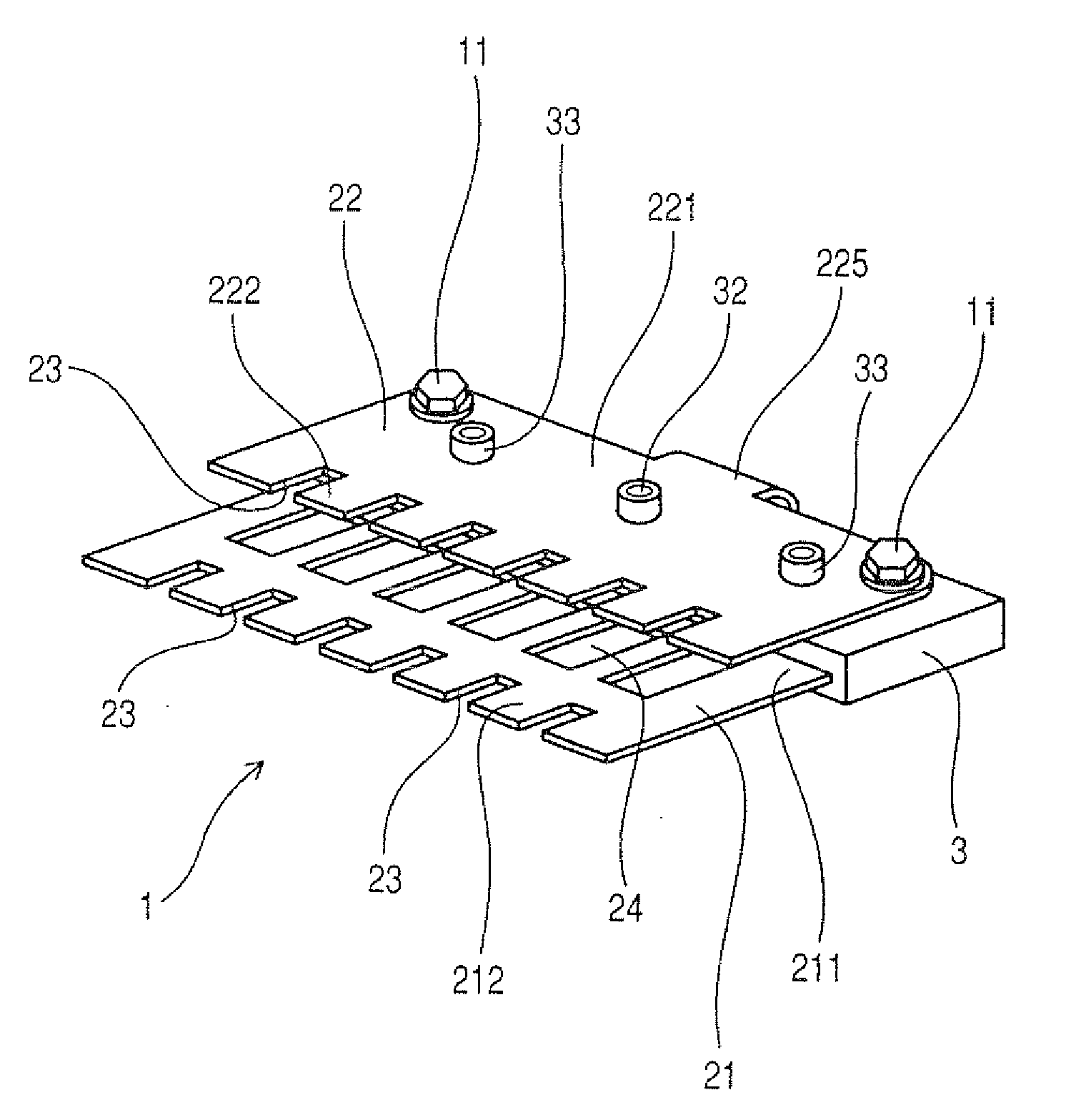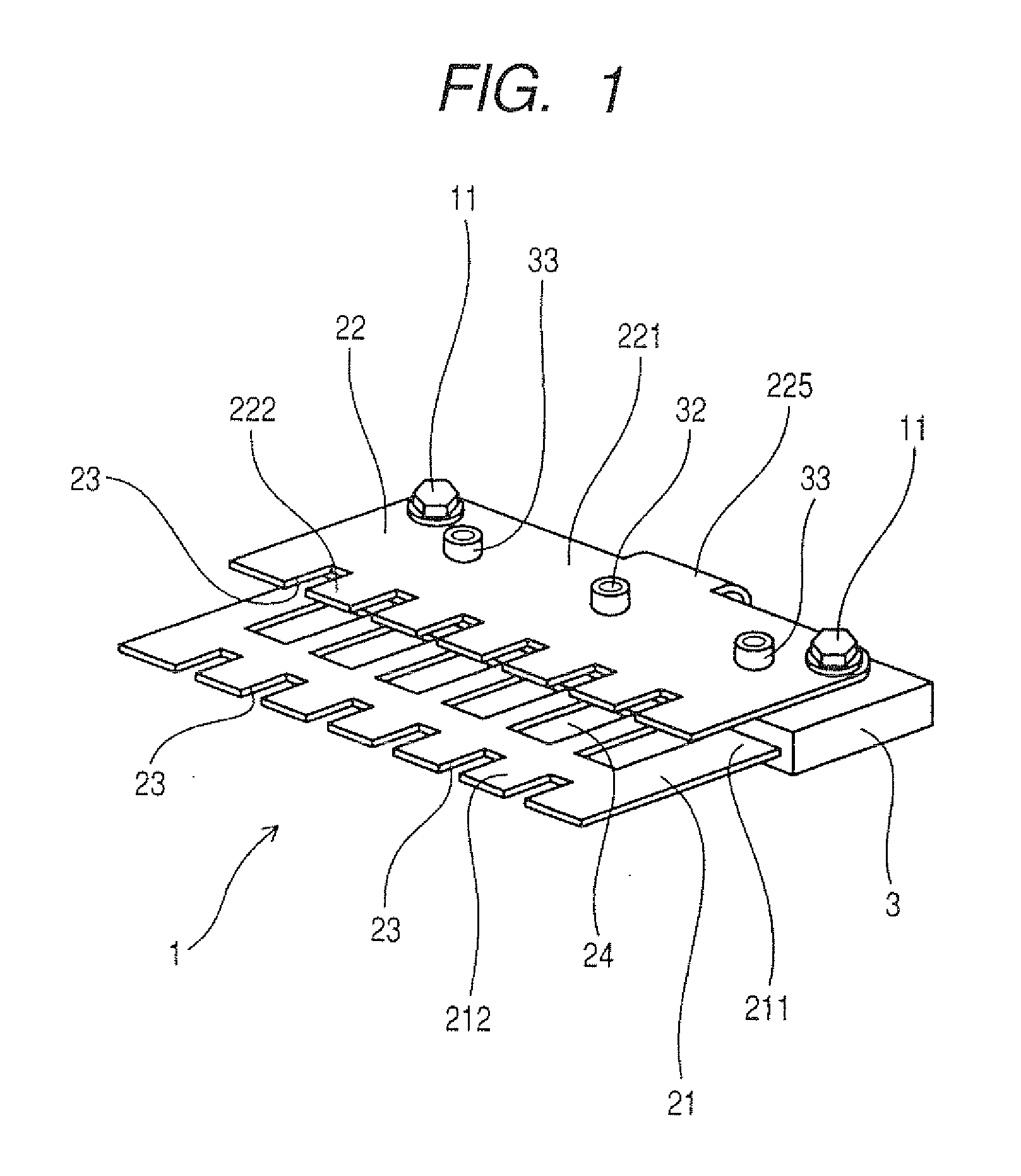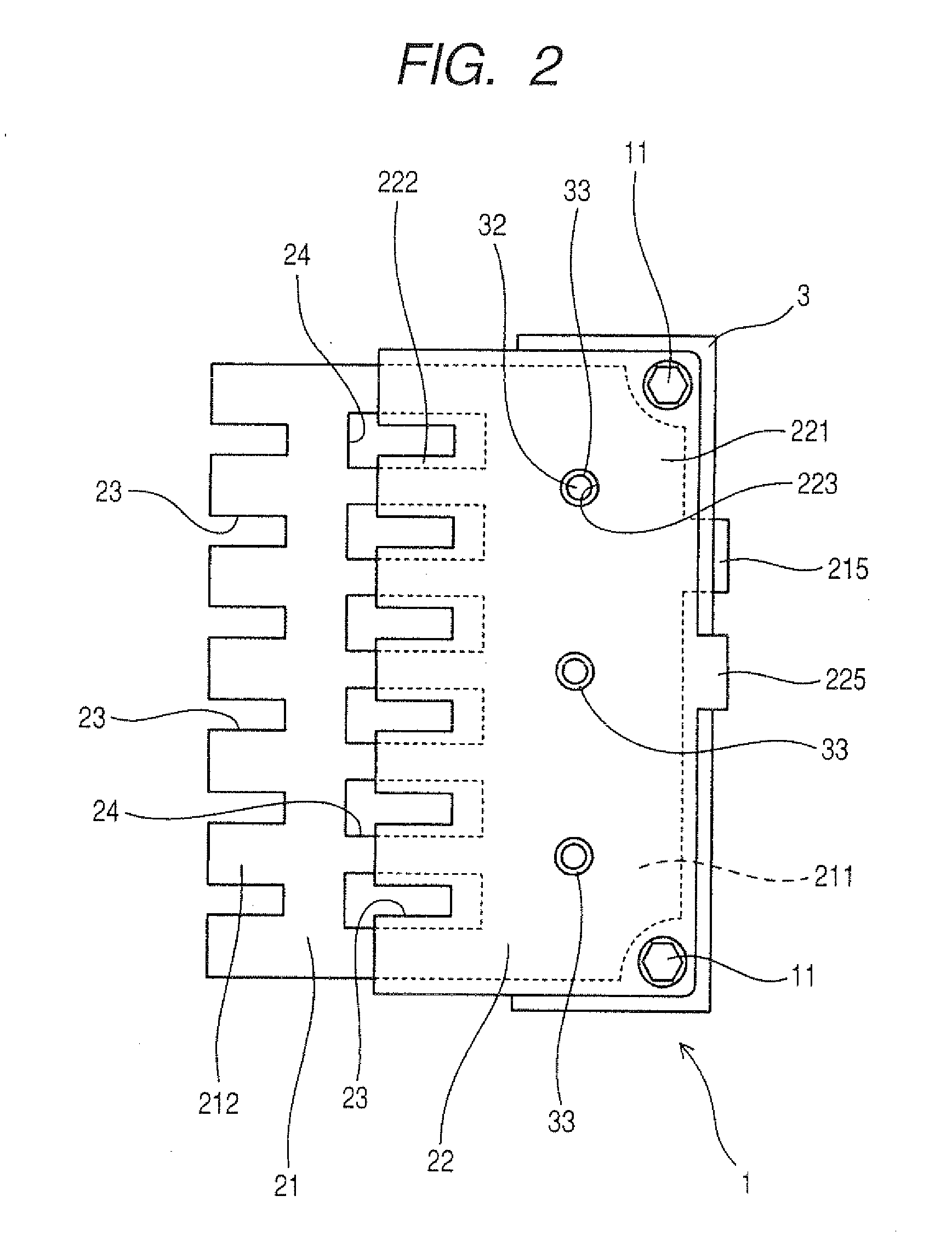Structure of bus bar assembly
a technology of bus bars and assembly parts, which is applied in the direction of bus-bar installation, substation/switching arrangement details, electric cable installation, etc., can solve the problems of increasing the amount of resin materials, requiring a complicated mold structure, and difficulty in keeping, so as to reduce the resistance of insulation, ensure orientation stability, and prolong the creepage distance
- Summary
- Abstract
- Description
- Claims
- Application Information
AI Technical Summary
Benefits of technology
Problems solved by technology
Method used
Image
Examples
Embodiment Construction
[0033]Referring to the drawings, wherein like reference numbers refer to like parts in several views, particularly to FIG. 5, there is shown a bus bar assembly 1 according to the present invention which may be employed to establish electric connections with a plurality of semiconductor modules installed in an electric power converter for use in electric vehicles or hybrid vehicles.
[0034]The bus bar assembly 1 includes a resin-molded body 3, a first bus bar 21, and a second bus bar 22. The first and second bus bars 21 and 22 are joined to main electrode terminals 41 of a plurality of semiconductor modules 4 installed in an electric power converter 40. Each of the semiconductor modules 4 is equipped with semiconductor devices. Each of the first and second bus bars 21 and 22 is made of a conductive flat plate.
[0035]The first bus bar 21, as shown in FIGS. 1, 2, and 5, consists of a plate body 211 and a plurality of connecting terminals 212 extending from the side of the plate body 211 i...
PUM
 Login to View More
Login to View More Abstract
Description
Claims
Application Information
 Login to View More
Login to View More - R&D
- Intellectual Property
- Life Sciences
- Materials
- Tech Scout
- Unparalleled Data Quality
- Higher Quality Content
- 60% Fewer Hallucinations
Browse by: Latest US Patents, China's latest patents, Technical Efficacy Thesaurus, Application Domain, Technology Topic, Popular Technical Reports.
© 2025 PatSnap. All rights reserved.Legal|Privacy policy|Modern Slavery Act Transparency Statement|Sitemap|About US| Contact US: help@patsnap.com



